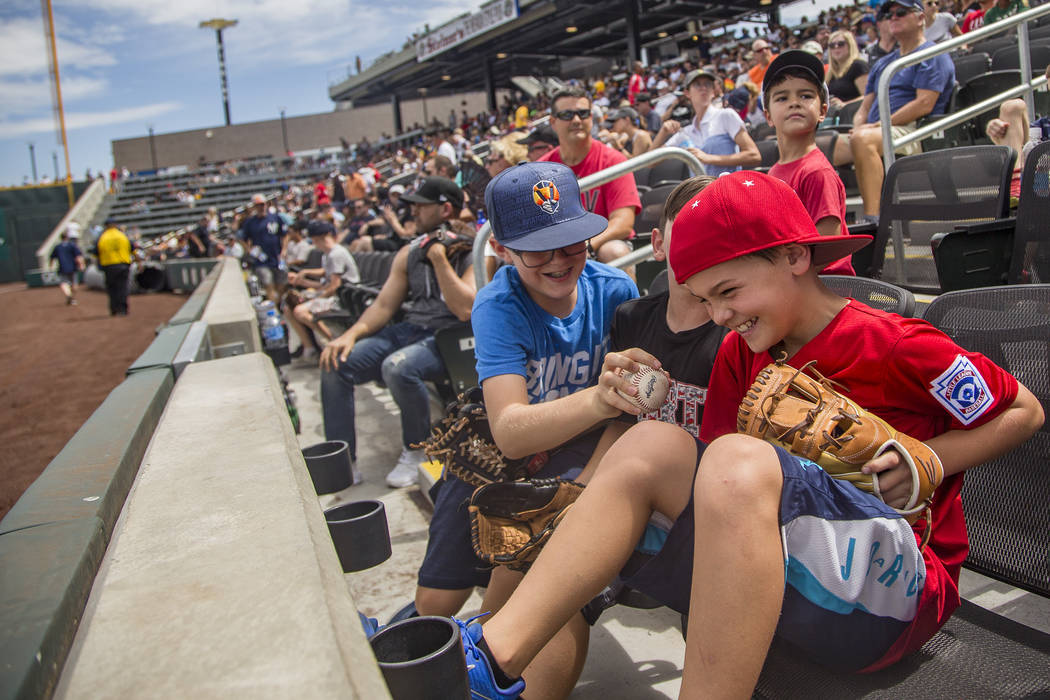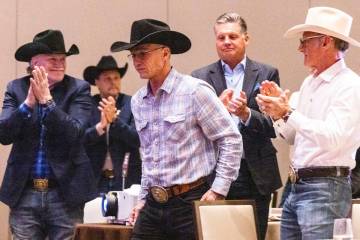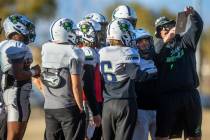Plan to reorganize minor leagues would not affect Aviators
It is 2,019.9 miles from First Tennessee Ballpark in downtown Nashville to the Santa Monica Pier in California, where historic Route 66 ends and the Pacific Ocean begins.
The Pacific Coast League is named, in part, for the Pacific Ocean. Nashville is the eastern-most member of the PCL. So if the PCL is reduced from a 14-team league to a 10-league team under a plan to reorganize baseball’s minor leagues, Nashville would be a logical choice to jump to a Triple-A league that made geographical sense.
If you’re a Sounds fans living in Las Vegas, there’s an outside chance you might miss the team’s biennial odysseys to play the Aviators.
But otherwise, “This has no effect on us,” Aviators president Don Logan said of a report that has most of Minor League Baseball in a tizzy.
It is fans in MiLB markets with Greyhound bus stations in lieu of major airports who stand to lose the most if reorganization smoke turns into a dumpster fire in which teams are eliminated.
“If they don’t fold immediately, they would soon go out of business and we would lose baseball in those cities,” Pat O’Conner, president of Minor League Baseball, told the New York Times about a proposal that could result in the MLB draft being cut in half, trimming the player pool and eliminating the need for around 20 teams.
Dream League nightmare
Some teams from the lower minor leagues — short season, rookie ball and low Class A — would be grouped into a so-called Dream League of undrafted players trying to break into pro baseball. Dream League teams would be co-owned by MLB and MiLB, instead of being independently operated.
O’Conner has advised smaller minor league clubs not to make financial commitments, lease agreements or schedules beyond 2020.
MLB released a statement:
“We are in discussions with the owners of the minor league teams to reorganize elements of the system with the goal of improving the working conditions of minor league players, including upgrading the facilities to major league standards, increasing player compensation, reducing travel time between affiliates for road games, improving transportation and hotel accommodations, increasing the number of off days, and providing better geographical affiliations between MLB clubs and affiliates.”
All of that sounds new and improved, especially the part about improving working conditions and increasing player compensation. In theory, it could mean climate-controlled batting cages for all. And that instead of making peanuts, utility infielders for the Carolina League’s Fayetteville Woodpeckers would start making Cracker Jack.
But it’s mostly about the batting cages, Logan said.
Ballpark renewal
“Facility conditions have to be dealt with,” the Aviators’ chief executive said after dealing with them for years himself when the Aviators were known as the 51s and played at ramshackle Cashman Field.
“You’ve got stadiums with substandard lighting, substandard locker rooms. Major League Baseball is right. The other issue is travel. Those two things are key to this process. We understand it, they understand it. That’s the crux of it.”
But Logan doesn’t believe the bases are loaded and Casey’s at bat. He thinks talk of a makeover is little more than a barnstorming session that got leaked to the media for public perusal and reaction.
“Keep your powder dry,” he said, borrowing an expression about being prepared and saving resources and not jumping to conclusions based on speculation and hearsay.
But should reorganization come to pass, it won’t be the first time Minor League Baseball has been contracted. In 1949, there were 438 minor league teams in 59 leagues. Only 15 of those leagues still were operating by the end of 1963.
Baseball survived.
But at the end of 1963, the Super Bowl didn’t exist. Michael Jordan was 11 months old. Wayne Gretzky was a 2-year-old on double-runners.
In today’s landscape, where competition for discretionary consumer dollars is intense and the average price of a World Series ticket is $2,069 in Washington, D.C., baseball can ill afford to turn its back on minor league towns where fans are cultivated on sultry summer evenings and $6 will get you a seat behind the dugout and a refrigerator schedule magnet.
Contact Ron Kantowski at rkantowski@reviewjournal.com or 702-383-0352. Follow @ronkantowski on Twitter.
Minor League Baseball hierarchy
— AAA or Triple-A is the highest MiLB level, where players are most likely to be called up to the parent major league team.
— AA or Double-A
— Class A advanced or "High-A"
— Class A, or "Low-A"
— Class A short season or "short season"
— Rookie Leagues. These teams usually play between 70 and 80 games in a season. This is where newly drafted players often start their pro careers.























